High Speed rail networks worldwide
Japanese Shinkansen
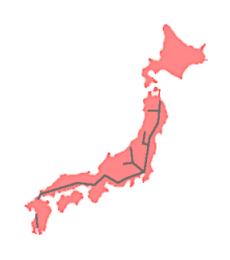
Japanese Shinkansen Network
When the Japanese Shinkansen opened it's first line from Tokyo to Shin-Osaka in 1964, it was the first of its kind worldwide. It was built to overcome the capacity problems of the, up-to then, all narrow-gauge rail network in Japan.
The 2500 km long system is one of the busiest worldwide and trains run up to 300km/h. As the Shinkansen trains have a broader gauge as the rest of the Japanese Rail Network, they run on high speed track only.
Japan had no choice than to build a separate, incompatible network. In Canada, the legacy tracks could be used as an extension of the new lines.
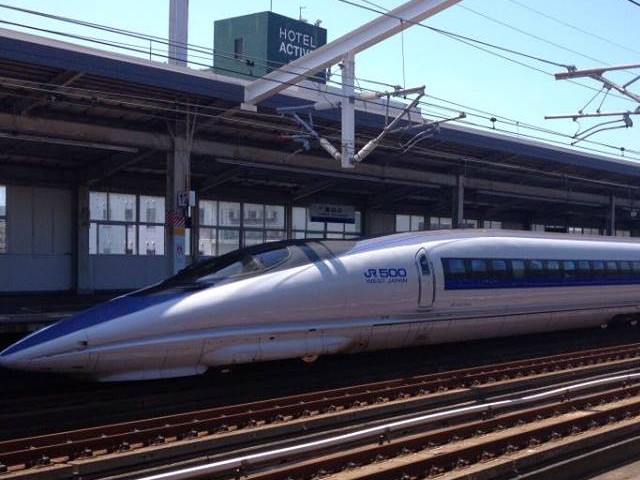
JR500 in Yamaguchi Ogorishimogo (2015).
© Photo: Connor Blais (Instagram @connors_travels)
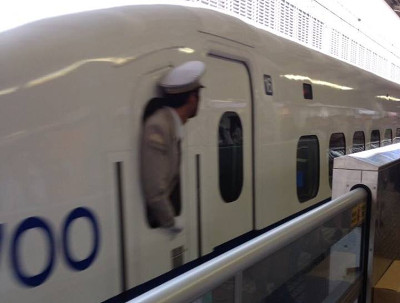
JR700 in Tokyo (2015).
© Photo: Connor Blais (Instagram @connors_travels)
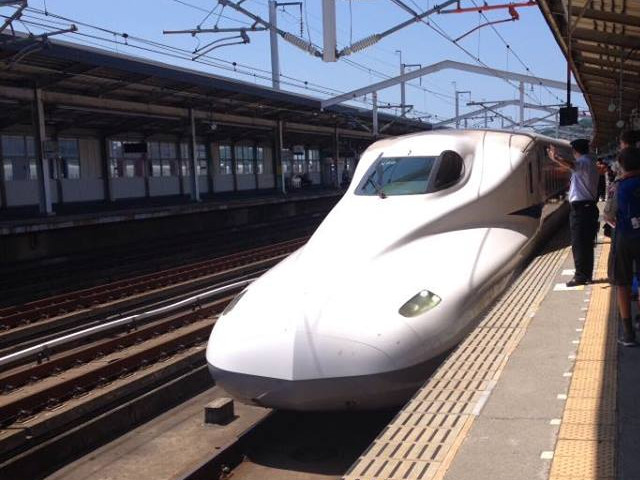
JR700 in Yamaguchi Ogorishimogo (2015).
© Photo: Connor Blais (Instagram @connors_travels)
French TGV Network
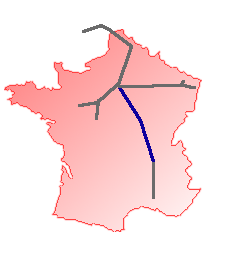
Blue: HSL South-East Paris-Lyon, 1981
Gray: Other HS-Lines
The French TGV Network is probably the most famous High-Speed Train Network. It started in 1981 with one single line, the HSL South-East between Paris and Lyon. Conventional tracks are used as feeder-lines for the few high-speed sections, thus creating a complex network. There are direct TGV connections from most French cities, as well as some neighboring countries, to Paris.
Originally built for the use of the TGV trains, the tracks are now used as well by the Eurostar, Thalys and the German ICE trains.
When you talk about the TGV, you will immediately hear that a TGV can not work in Canada because of the large distances and the low population density. However, not only is the distance between Montreal and Toronto similar to the one between Paris and Lyon, also the total population of the city-pairs add up to comparable numbers.
Travel times for some destinations:
- Paris-Lyon (425km): 2h
- Paris-Marseilles (750km): 3h
- Paris-London (450km): 2h
- Paris-Bruxelles (300km): 1h 30min
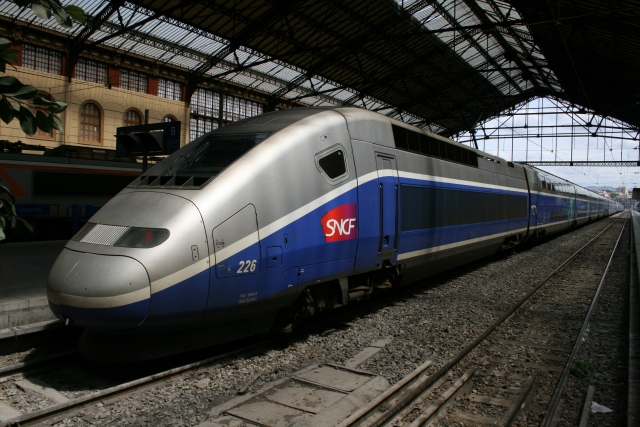
TGV Douplex in Marseilles (2008).
© Photo: Stefan Bracher
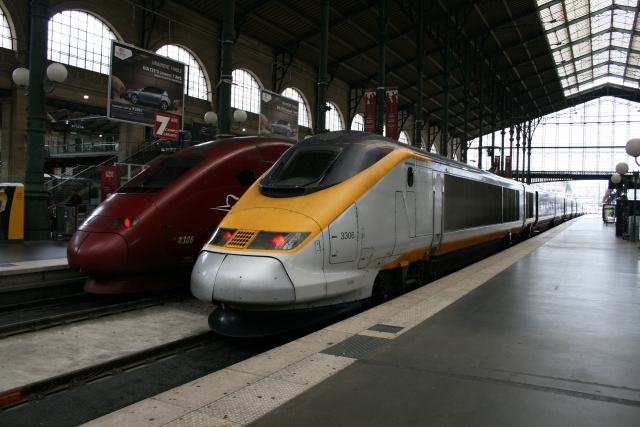
Eurostar and Thalys at Paris Gare du Nord (2008)
© Photo: Stefan Bracher
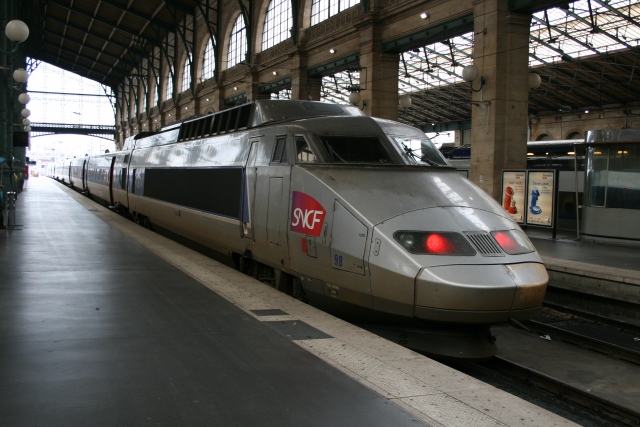
TGV Reseau at Paris Gare du Nord (2008)
© Photo: Stefan Bracher
German ICE Train
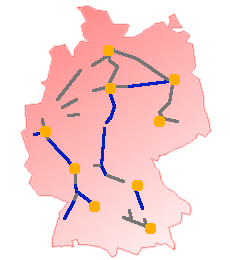
Blue:High Speed Rail (250-300 km/h)
Gray: Upgraded Track (200-230 km/h)
Germany's High Speed Rail Network and the train running on it, the Inter City Express (ICE) are in operation since 1991. The Network is a patchwork of new high speed lines and upgraded tracks, connected by conventional low speed sections.
In the 90s and early 2000s, Germany and France engaged in a competition for the fastest train. While the Germans led the race several times, the French ultimately won it in 2007 with a train running at 574.8 km/h. In the meanwhile the focus shifted from the national to the European level. French TGVs now use the German network as well as German ICE trainsets run to Paris and other cities in neighboring countries of Germany.
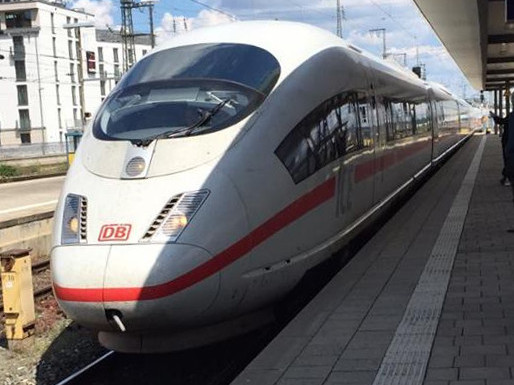
ICE3 in Nurnberg, Germany. (2016)
© Photo: Connor Blais (Instagram @connors_travels)
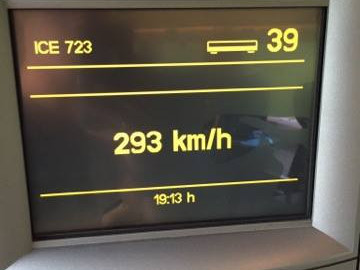
Speed display in an ICE train. (2016)
© Photo: Connor Blais (Instagram @connors_travels)
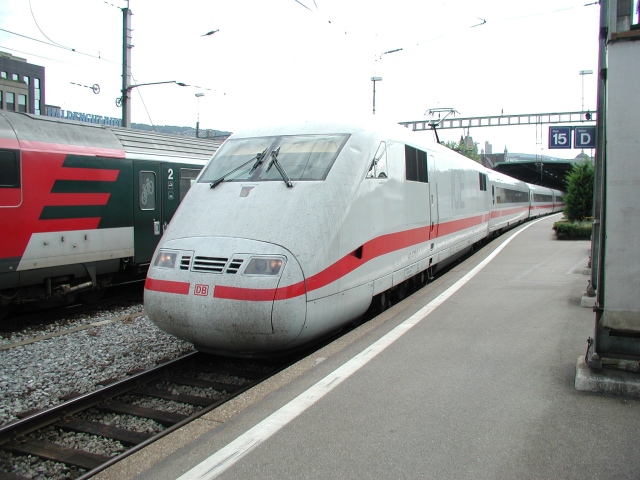
German Inter City Epress (ICE), Zurich, Switzerland (2001)
© Photo: Stefan Bracher
Swiss Rail 2000

Blue: New High speed lines
Gray: Other Main Lines
Switzerland took a different approach than most other countries. The project Rail 2000 that started in 1987 aims to create a simpler timetable and improve the connection times. The principle is to have a network of transfer points, at which, trains arrive from all directions at the full or half the hour and leave a few minutes later.
To achieve this goal, the travel times between those transfer points had to be cut to under one hour. All network improvements have thus be done to run trains not as fast as possible, but as fast as necessary.
Rail 2000 details:
- New track layout at stations, so trains from different directions can enter and leave at the same time
- Various small track improvements
- New tilting and pendular trains
- A new high-speed core line of 45km between Matstetten and Rothrist.
- Base Tunnels at the Lotschberg (34,6km) and the Gotthard (57km)

ICN tilting train at Geneva (2001).
© Photo: Stefan Bracher
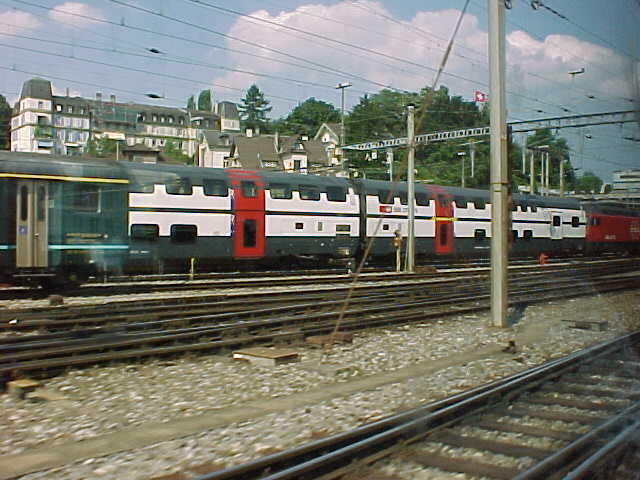
IC 2000 double decker train
© Photo: Stefan Bracher
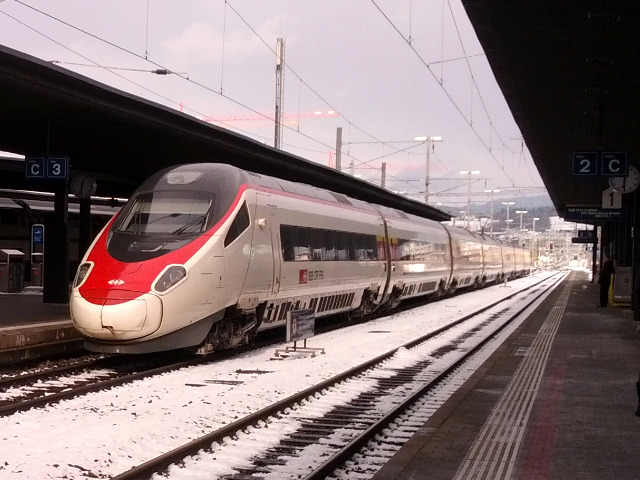
ETR610 tilting train at Zug (2017)
© Photo: Stefan Bracher
Russian Sapsan
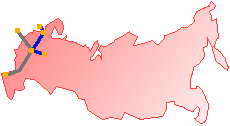
Blue: Operating lines
Gray: Discussed Lines
A frequently used argument against high speed trains in Canada is the climate. However, Russia, a country with very similar winter temperatures, already operates three high speed rail routes.
The Sapsan trainsets based on the German ICE run between St. Petersburg, Moscow and Nizhny Novgorod at a top speed of 250 km/h. Another line between St. Petersburg and Helsinki (Finland) is using a variant of the Italian Pendolino, the Allegro.
China

Blue: High Speed Rail
Gray: Upgraded Track
China started to upgrade some of its lines for 160 km/h travel in the late 1990s. Today it features the worlds largest and busiest high speed rail network. It also is home to the worlds longest high speed rail line: The 2300 km line from Beijing to Guangzhou.
First, China imported Japanese, Italian, Swedish and German technology but in the meanwhile is building its own trains.

CRH3 in Tianjin, China (2016).
© Photo: Stefan Bracher

CRH3 in Qufu-East, China (2016).
© Photo: Stefan Bracher

High speed trains in China, Tianjin (2016).
© Photo: Stefan Bracher
Books you might like
- Trans-Canada Rail Guide: Includes Rail Routes and Maps plus Guides to 10 Cities
- The Second Age of Rail: A History of High Speed Trains
- VIA Rail
- L'Odyssée du TGV une histoire, des records et des hommes
- Canadian Trains 2021 Bilingual French English Square Wall Calendar
Model trains you might like
- Bachmann Trains - Amtrak Acela DCC Equipped Ready to Run Electric Train Set - HO Scale
- SNCF TGV Duplex - 1995 die-cast 1/160 scale model locomotive TGV Duplex SNCF - 1995 diecast 1: 160 scale locomotive model (Amercom LN-38)
- N gauge 10-1174 N700A hope 4 both basic set (japan import)
- N 500 Shinkansen Set (4)
- LEGO City Passenger Train Building Kit (677 Piece), Multicolor
© Webdesign and content by Stefan Bracher. This Website does not use any Cookies.
